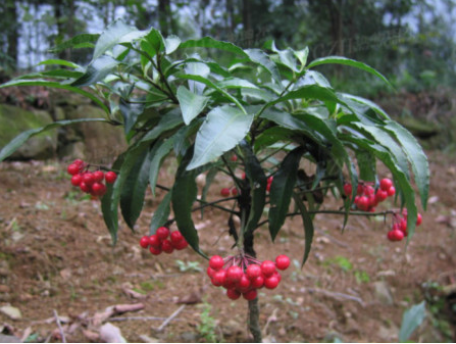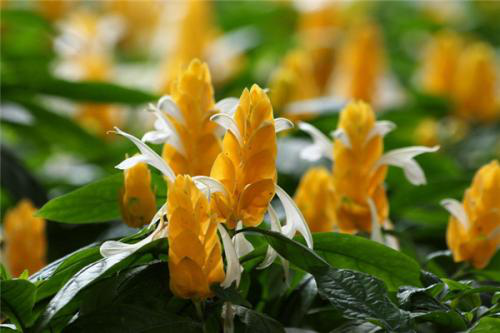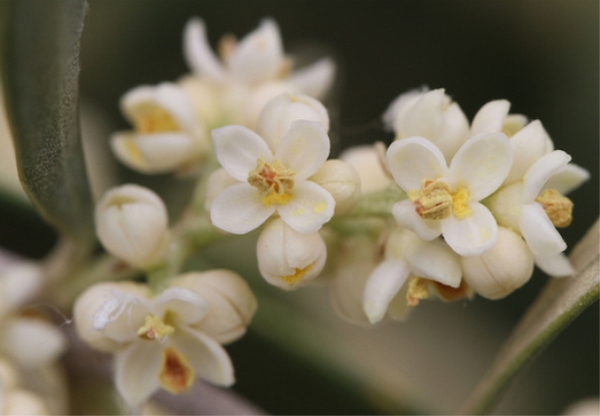The culture method of cinnabar root:
Humidity should be paid attention to.
Cinnabar roots can only grow in wet or semi-dry and semi-humid climates, and the air humidity is controlled at 60% 80%, otherwise the leaves in the lower part will turn yellow and fall, and the leaves in the upper part will be dim.
Second, pay attention to the temperature
The hometown of cinnabar root is in the tropics, so we should be very careful when cultivating cinnabar root in winter, and the temperature should be controlled above 9 °.
Third, the light should be sufficient.
Cinnabar root especially likes light, so if you want to grow in the house, please try to put it where the sun can bask in, such as dining room with large floor-to-ceiling windows, balcony, etc., keep it indoors for a month and then move outside for a month. Follow this indoor and outdoor rule.
Fourth, attention should be paid to fertilization
Organic fertilizer should be added when sowing for the first time, except in spring, summer and autumn, 2-3 days come in the order of one Huabao and one clear water, and in winter, 4-6 days come in the order of one Huabao and two clear water.
5. Pruning and pruning should be in time
If cinnabar roots become thinner, worm-borne, withered, and grow too well, we should have the courage to cut off those branches and leaves, and we can choose grafting and other methods to save it.

Culture method of cinnabar root
Humidity management
Like the humid or semi-dry climate environment, the relative temperature of the air in the growing environment is required to be 50-70%. When the air relative humidity is too low, the lower leaves yellowing and falling off, and the upper leaves are not glossy.
Temperature management:
Because it is native to the subtropics, it has strict requirements for winter temperature and stops growing when the ambient temperature is below 8 ℃.
Light management
The ability to adapt to light is strong. Put in indoor maintenance, as far as possible in places with bright light, such as well-lit living room, bedroom, study and other places. After indoor maintenance for a period of time (about a month), it should be moved to an outdoor place with shade (heat preservation in winter) for a period of time (about a month), so alternately.
Fertilizer and water management
For potted plants, in addition to adding organic fertilizer when potting, proper fertilizer and water management should be carried out in the usual maintenance process. Spring, summer and autumn: these three seasons are its peak growing season. Fertilizer and water management circulates according to the order of "Huabao"-- clear water-- "Huabao"-- clear water. The interval period is about 1-4 days, and the interval period is shorter during sunny or high temperature days. The interval period is longer or not watered during rainy days or low temperatures. Winter: during the dormant period in winter, the main task is to control fertilizer and water. Fertilizer and water management circulates according to the order of "Hua Bao"-clear water-"Hua Bao"-"Hua Bao"-clear water, with an interval period of about 3-7 days. The interval period is shorter in sunny or high temperature days, longer or unwatered in rainy days or low temperature days. For ground-planted plants, fertilizer and water were applied 2 to 4 times in spring and summer according to drought conditions: first, a small trench was opened at 30cm to 100cm outside the root neck (the larger the plant, the farther away from the root neck), the width and depth of the ditch were both 20cm. The ditch is sprinkled with 25-50 jin of organic fertilizer, or 1-5 two-grain compound fertilizer (chemical fertilizer), and then poured with water. After the beginning of winter, before the beginning of spring, fertilize again according to the above method, but do not need watering.
Pruning
When the plant enters the dormant or semi-dormant period in winter, the branches such as thin, disease and insect, withered and overdense should be cut off. The branches can also be arranged in combination with cuttings. Change the basin: as long as it is properly maintained, it will grow very fast. when it grows to a certain size, it should be considered to change a larger basin to allow it to continue to grow vigorously. The culture soil and composition ratio for basin change can be selected as follows: vegetable garden soil: slag = 3RU 1; orchard soil: medium coarse river sand: sawdust = 4RU 1RU 2; or one of paddy soil, pond mud, rotten leaf soil.
Cinnabar root culture method cinnabar root, also known as big umbrella, rich son, there are also many people called Jinyu Mantang, for the purple Taurus family of angiosperms, purple Taurus genus. Cinnabar root likes the humid or semi-dry climate environment, which requires that the air relative temperature of the growing environment is 50-70%. When the air relative humidity is too low, the lower leaves yellowing and falling off, and the upper leaves are not glossy. Because cinnabar root is native to the subtropics, the temperature in winter is very strict, and the growth stops when the ambient temperature is below 8 ℃. Cinnabar root has a strong adaptability to light. Put in indoor maintenance, as far as possible in places with bright light, such as well-lit living room, bedroom, study and other places. After indoor maintenance for a period of time (about a month), it should be moved to an outdoor place with shade (heat preservation in winter) for a period of time (about a month), so alternately. For potted plants, in addition to adding organic fertilizer when potting, proper fertilizer and water management should be carried out in the usual maintenance process. Spring, summer and autumn: these three seasons are its peak growing season. Fertilizer and water management circulates according to the order of "Huabao"-- clear water-- "Huabao"-- clear water. The interval period is about 1-4 days, and the interval period is shorter during sunny or high temperature days. The interval period is longer or not watered during rainy days or low temperatures. Winter: during the dormant period in winter, the main task is to control fertilizer and water. Fertilizer and water management circulates according to the order of "Hua Bao"-clear water-"Hua Bao"-"Hua Bao"-clear water, with an interval period of about 3-7 days. The interval period is shorter in sunny or high temperature days, longer or unwatered in rainy days or low temperature days. For ground-planted plants, fertilizer and water were applied 2 to 4 times in spring and summer according to drought conditions: first, a small trench was opened at 30cm to 100cm outside the root neck (the larger the plant, the farther away from the root neck), the width and depth of the ditch were both 20cm. The ditch is sprinkled with 25-50 jin of organic fertilizer, or 1-5 two-grain compound fertilizer (chemical fertilizer), and then poured with water. After the beginning of winter, before the beginning of spring, fertilize again according to the above method, but do not need watering. When the plant enters the dormant or semi-dormant period in winter, the branches such as thin, disease and insect, withered and overdense should be cut off. The branches can also be arranged in combination with cuttings. Change the basin: as long as it is properly maintained, it will grow very fast. when it grows to a certain size, it should be considered to change a larger basin to allow it to continue to grow vigorously. The culture soil and composition ratio for basin change can be selected as follows: vegetable garden soil: slag = 3RU 1; orchard soil: medium coarse river sand: sawdust = 4RU 1RU 2; or one of paddy soil, pond mud, rotten leaf soil.
- Prev

Culture method of Golden Bract Flower
1. Temperature the suitable temperature for the growth of Golden Bract is about 15 ℃-25 ℃. If the temperature is too high or too low, it is disadvantageous to its growth. If the temperature is too low, the leaves will fall off, and in severe cases, the plants will even wither and die. In winter, it should be kept in a sunny place indoors, watering should be controlled slightly, and the lowest temperature should be above 10 ℃.
- Next

How to cultivate olive flowers
Soil olive flower is suitable for growing in fertile, well-drained sandy soil. It is resistant to drought and has strong adaptability to soil. It can grow in both slightly alkaline sandy loam and calcareous clay. Temperature olive flowers are hardy, can withstand a low temperature of-12 ℃, and can spend the winter outdoors in winter.
Related
- Fuxing push coffee new agricultural production and marketing class: lack of small-scale processing plants
- Jujube rice field leisure farm deep ploughing Yilan for five years to create a space for organic food and play
- Nongyu Farm-A trial of organic papaya for brave women with advanced technology
- Four points for attention in the prevention and control of diseases and insect pests of edible fungi
- How to add nutrient solution to Edible Fungi
- Is there any good way to control edible fungus mites?
- Open Inoculation Technology of Edible Fungi
- Is there any clever way to use fertilizer for edible fungus in winter?
- What agents are used to kill the pathogens of edible fungi in the mushroom shed?
- Rapid drying of Edible Fungi

